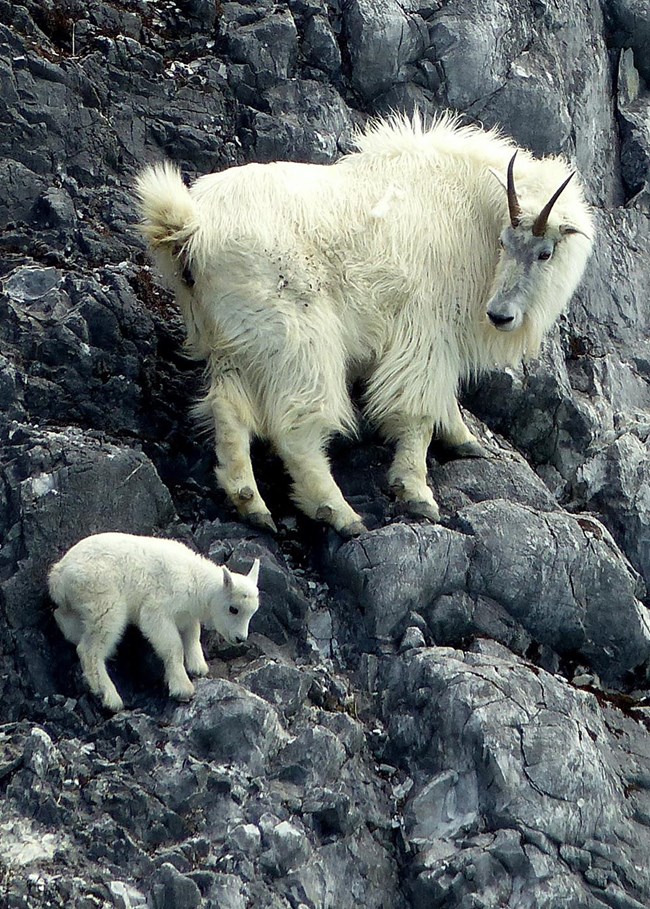Last updated: December 18, 2023
Article
The Benefits of Alaska Wilderness

Federal Wilderness is the Homeland of Indigenous Peoples
Many laws, policies, and events in the decades and centuries prior to the passage of the Wilderness Act influence how people view the concept of wilderness and how they might perceive the Wilderness Act itself. Lands now managed as federal wilderness were forcibly taken from Indigenous Peoples and later, from other marginalized groups. It is imperative to recognize that what we see today is the culmination of thousands of years of intentional land stewardship by the many people connected to these places. And the benefits of federal wilderness should reflect this mosaic of sustained connections.

Wilderness Benefits are Rooted in Wilderness Character
The National Wilderness Preservation System protects over 111 million acres of federal public land through wilderness designation, managed by the National Park Service (NPS), Bureau of Land Management, U.S. Fish and Wildlife Service, and U.S. Forest Service. The NPS is responsible for the stewardship of over 44 million acres of designated wilderness. When combined with other NPS lands managed as wilderness per policy, over 80 percent of all NPS lands are managed as wilderness.So why is wilderness necessary if NPS units are already “protected”? While wilderness often amplifies existing benefits of national parks, wilderness also offers diverse and distinct social, cultural, and ecological benefits rooted in wilderness character preservation. This holistic concept protects the biophysical environment, personal experiences, and symbolic meanings that collectively distinguish wilderness from general backcountry and frontcountry areas on federal lands.
Alaska Wilderness Benefits Include:
Ecosystem-scale preservation
Wilderness preserves cultural values of place (including cultural sites and landscapes), intact ecosystems that support the integrity of Homeland, ecosystem services like headwaters-to-downstream protection of critical water supplies and class I air quality areas, habitat protection for species with small and large ranges, and more. This scale of preservation is supported by the prohibition of some extractive activities like logging, mining, oil and gas drilling, industrial development, and permanent road building.
Food security for rural residents
Alaska Wilderness protects wildlife populations and plants that are critical to subsistence lifeways.
Mitigation of climate change impacts
Alaska Wilderness offers refugia and a baseline for non-human species where the impacts of climate change are some of the most pronounced anywhere in the world. Wilderness sequesters carbon, helps stabilize the climate, and helps avoid species extinctions.
Commitment to exercise restraint
The concept of “untrammeled” recognizes the importance of people co-existing with the planet, where people are thoughtful about actions they take that might interfere with the rest of the natural world. In this way, wilderness is a place where we can feel part of, rather than apart from, the rest of the natural world.
Protections for solitude, primitive, and unconfined recreation
The concept of “solitude or primitive and unconfined recreation” recognizes many activities are appropriate and compatible with wilderness, especially those that rely on human power, enhance traditional experiences and skills, and give us a chance to ‘unplug’. Opportunities for connection are not disrupted by unwanted sights and sounds of others. Achieving this quality is deeply personal and experientially varies among people and cultures.
Protections for public purposes
Specific public purposes (or uses) of wilderness are described in the Wilderness Act, Section 4b, “Except as otherwise provided in this Act, wilderness areas shall be devoted to the public purposes of recreational, scenic, scientific, educational, conservation, and historical use.” These diverse uses position wilderness as a concept and place that spans many interest types, including for people who access wilderness and those who do not.
Cascading Benefits for Adjacent Public Lands
With over 80 percent of all NPS lands managed as wilderness, these areas provide the broader scenic and soundscape backdrop for many frontcountry settings in national parks. The landscape buffer from higher intensity development that wilderness affords can be appreciated by frontcountry users too.

Wilderness Amplifies Benefits to NPS Lands
Wilderness areas are a part of broader NPS units, like national parks, monuments, preserves, lakeshores, seashores, and more. Many of the benefits of NPS units are amplified in and by NPS wilderness. For example:
-
Settings that support mental and physical health
-
Settings that inspire connections with people and place
-
Enhanced economic value for regional and local economies
